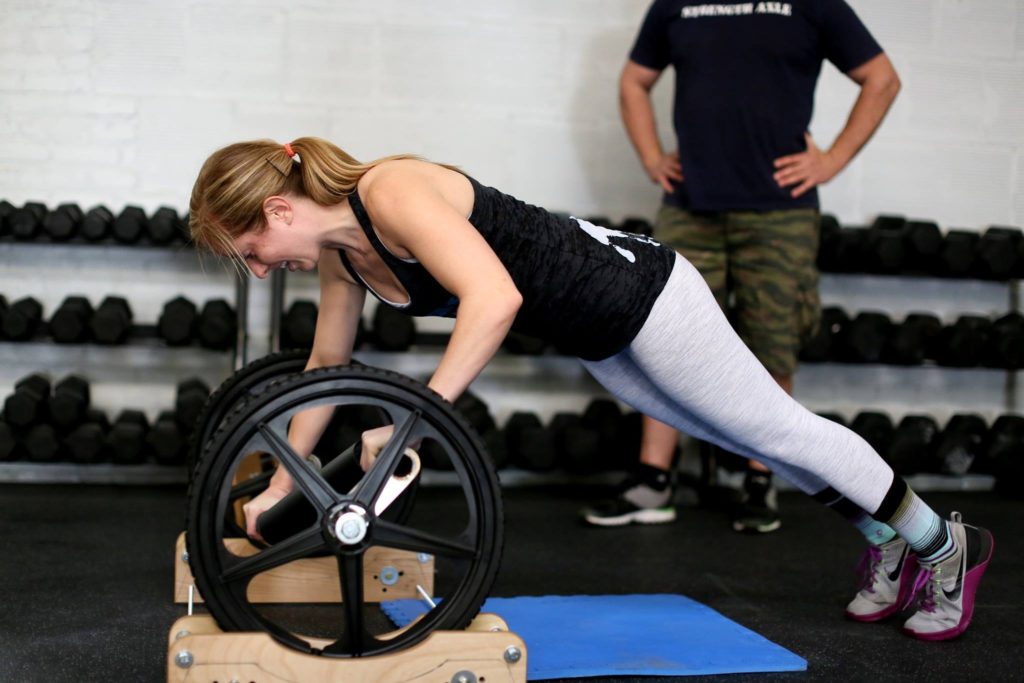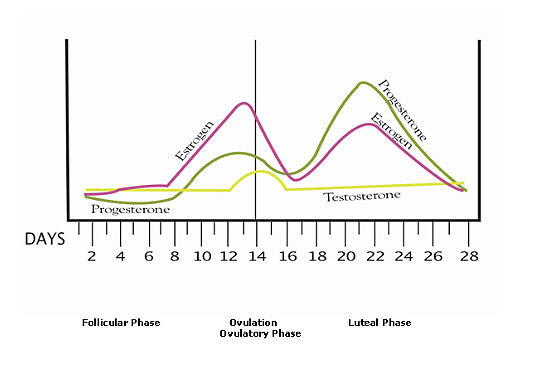
Can Your Period Predict Your Pants-Peeing?
Written by Michele Vieux
Ladies – do you wonder why you struggle to control the flow of urine during exercise? Maybe it happens to you only sometimes but you can’t quite pinpoint when and why so that you may plan for this seemingly unexpected surprise. Gentlemen, have a lady in your life who experiences this pee problem? Time to spread the word!
Although there are many known causes of a weak pelvic floor (check out Coach Nichole’s article: Double-Unders and Peeing), I surmise that there is another that has neglected to be mentioned. Maybe the connection has yet to be made or maybe my conclusions are incorrect, however I’d suggest that the time of your menstrual cycle can also help predict times you are at a higher risk for experiencing symptoms of a weak pelvic floor. If we can pinpoint this information, we can protect ourselves and put an end to embarrassing gym scenarios.
Pelvic Floor 101
The pelvic floor muscles are tightly slung between the tailbone (coccyx) and the pubic bone, and support the bowel, bladder, uterus and vagina. Muscular bands (sphincters) encircle the urethra, vagina and anus as they pass through the pelvic floor. When the pelvic floor muscles are contracted, the internal organs are lifted and the sphincters tighten the openings of the vagina, anus and urethra. Relaxing the pelvic floor allows passage of urine and feces.
If the muscles are weakened, the internal organs are no longer fully supported and you may not be able to control your urine. There are many known and common causes of a weak pelvic floor and I venture to guess that we can also predict a monthly cause if we piece together the information we have on these other known causes. Estrogen appears to be a key piece in this puzzle.
Causes of a Weak Pelvic Floor
– The weight of the uterus during pregnancy
– Vaginal childbirth, which over stretches the muscles
– The pressure of obesity
– Chronic constipation and associated straining to pass motions
– Constant coughing
– Some forms of surgery that require cutting the muscles
– Lower levels of estrogen after menopause*
Knowing how a normal menstrual cycle works helps to understand the symptoms of premenstrual syndrome (PMS), perimenopause and menopause. Symptoms – like urine leakage – are often the result of too much or too little hormone(s). If we look at the causes of a weak pelvic floor, it can help us determine when we are more at risk for peeing during exercises or other undesirable times.
Taking a Closer Look at Estrogen
Estrogen is one of the female sex hormones and is responsible for growing and maturing the uterine lining (lining that is shed during menstruation) and also matures the egg prior to ovulation. Estrogen is produced mostly by the ovaries but also in smaller amounts by the adrenal glands and in fat tissue.
If you take a look at the final item listed under ‘Causes’ – lower levels of estrogen after menopause* – you may begin to speculate other times estrogen is low and therefore additional (unlisted) times that you are more likely to experience urine leakage. Estrogen production is severely decreased in perimenopause and menopause. And there are few-day(s) periods throughout the cycle where estrogen is lowest. Oh snap! That last one isn’t on the list but should it be?

Many women claim to have “good days” and “bad days” when it comes to being able to do pee-free double-unders and this finding would tend to support that. If we look at estrogen levels throughout the menstrual cycle, there are few-day periods throughout the cycle where estrogen is much lower, therefore presumably causing the pelvic floor to become weaker, hence a more dangerous time to be doing unprotected double-unders, running and heavy squatting.
Determining Your Danger Zone
To determine your “danger zone”, count the days of your cycle starting at the first day of bleeding.
Days 1-8 = Danger Zone
Days 9-15 = Safe Days
Days 16-18 = Danger Zone
Days 19-25 = Safe Days
Days 26-30 = Danger Zone
What to Do About It
You could avoid all activities that induce urine leakage, however if you look at how many days of the month this would involve, that seems like an unlikely option for anyone who is serious about their training.
Option 1 – Do your Kegels (pelvic floor exercises)! See Coach Nichole’s article for instructions and prescribed sets.
Option 2 – Wear an extra layer of protection. If you’ve ever been in the incontinence aisle of the grocery store then you know there are products available for this. However most of these products are not intended for athlete use and they are quite bulky. Alternatives include pads (used for menstruation) and these discreet disposable panties which are also made for the menstrual cycle that you may have recently seen advertised on Facebook.
Option 3 (highly recommended) – Do BOTH Options 1 and 2.
No matter what you choose to do to address the problem, pinpointing your “danger days” can help you be prepared and protect you from embarrassing gym scenarios.
Also Check Out…
Double-Unders And Peeing: The Power Of The Kegel
Is It Smart To Workout With Your Significant Other?
Resources:
“Pelvic Floor”, Better Health Channel, Australian Physiotherapy Association, 2016.
“About Hormone Imbalance”, Women in Balance Institute, 2016.

You can always consult with a Urogynecologist who specializes in treating Stress Urinary Incontinence (that’s why I do). There are other conservative or invasive options for treatment. Poise sells a continence took called Impressa that can be used during workouts. Many women need help learning how to do pelvic floor exercises correctly. A pelvic floor physical therapist can help.
“continence tampon*
I feel this article was really helpful